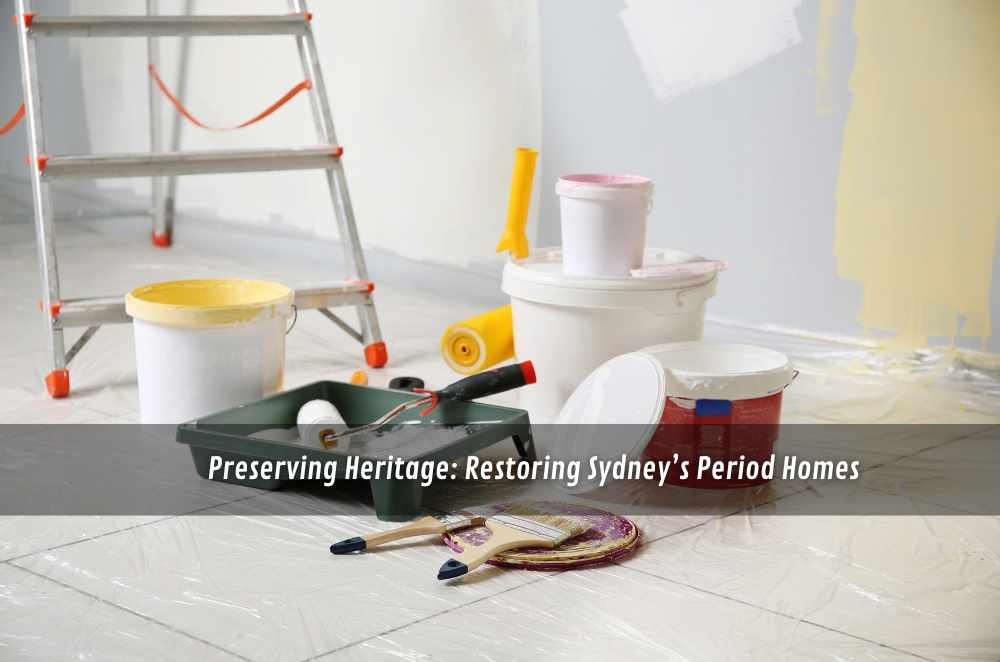
Sydney’s older homes carry the kind of detail you don’t find in new builds — pressed metal ceilings, carved timber fretwork, and weatherboards seasoned by time. Restoring them is less about chasing modern trends and more about protecting the craftsmanship that’s already there. The work often starts with something deceptively simple: a fresh coat of paint. But heritage painting calls for more than just brushes and rollers. It demands tradespeople who know how to balance preservation with practicality. Many homeowners choose trusted residential painters in Sydney for this reason, because experience makes the difference between covering up history and letting it breathe. When the right approach is taken, paint becomes both a shield against the weather and a frame that highlights every detail worth keeping.
What makes heritage paintwork different
Heritage painting is careful work. Old materials move and breathe; decorative elements demand patience; and the wrong prep can erase detail that’ll never return.
Fine profiles (fretwork, cornices, window sashes) need small tools and light pressure.
Old timber and lime plasters prefer breathable systems that shed moisture.
Coastal exposure and shade patterns call for different primers and schedules.
Colour placement matters: base, trim, and accent should read as one story.
Organisations such as the National Trust of Australia often stress that retaining original finishes preserves more than just aesthetics — it protects the cultural value of a property and the neighbourhood it belongs to. On a weatherboard in Balmain, I spent two days mapping movement cracks before touching a brush. That “map first, paint later” approach kept the shadow lines crisp and the sash cords free. The lesson: heritage paintwork rewards restraint and sequencing more than speed.
Navigating compliance without losing character
Good restoration is as much about decisions as it is about dexterity. Councils, strata rules, and trade licences sit in the background of most heritage paint jobs. Choosing licensed trades reduces risk around safety, surface testing, and lead management — all things that matter when you’re sanding century-old layers. Homeowners often need to understand the painting licence requirements in NSW before they begin, as this sets out who can legally carry out certain types of work and the standards they must meet.
Licence checks help align expectations on scope and supervision.
Lead-safe methods (capture, sealing, disposal) keep dust out of living areas.
Documented product systems make future maintenance predictable.
Approvals or heritage advice can clarify colour placement before work starts.
Alongside these requirements, Heritage NSW provides guidance on when a property may require approval for painting, ensuring changes respect the historic significance of the building. Compliance doesn’t have to be a hurdle; used well, it sets boundaries that free everyone to focus on craft.
Preparation that protects the original fabric
Paint fails where prep cuts corners. Heritage prep trades time now for time later — stabilising substrates, keeping crisp edges, and giving future coats a fair shot at bonding.
Clean first: salts, mould, and chalk must go before sanding means anything.
Test patches: small trials confirm adhesion and sheen in awkward light.
Gentle stripping: preserve arrises on joinery and the grain on old boards.
Prime with purpose: tannin-blockers, rust converters, and breathable primers where they belong.
On a Federation semi in Petersham, I logged every substrate change (rimu, cedar, cast iron, lime plaster) before ordering products. That list became the roadmap for sequencing. For homeowners, spending time on house painting preparation often feels slow, but it’s the step that makes everything that follows last longer and look sharper. Skipping it almost guarantees peeling or uneven surfaces, which is exactly what heritage restorers want to avoid.
Finishes that respect the home and the environment
Choosing finishes for a period home is a balancing act: durability, breathability, sheen, and environmental profile all matter. Interiors with ornate plaster benefit from sheens that soften imperfections; exteriors near the coast need robust, UV-stable systems that still let old timber exhale.
Match sheen to surface: low-sheen walls, satin trims, and sensible gloss for doors.
Aim for breathable systems on old masonry and timbers to avoid trapped moisture.
Protect iron lace and gutters with compatible metal primers and topcoats.
Keep ventilation in mind: lower-odour products suit lived-in renovations.
When clients ask about healthier finishes, I talk through ingredients, curing times, and ventilation plans. Many homeowners now look to sustainable house paint as a way to balance heritage care with modern environmental expectations. The benefit isn’t just ecological; low-VOC formulas often create cleaner indoor air and make the painting process less disruptive for families still living in the home.

Colour choices that fit the street (and you)
A sympathetic palette can lift detail without turning the house into a museum piece. Start with the bones: base colour for walls, a calmer tone for trims, and a confident but measured accent on doors or brackets.
Sample where light shifts: verandahs lie; eaves lie even more.
Borrow harmony: pick an accent already living in your tiles or leadlights.
Respect the rhythm of the street while letting your door colour speak softly.
Keep placement disciplined so profiles read clearly from the footpath.
For inspiration on placement and combinations, many homeowners browse Houzz, which showcases heritage palettes and contemporary takes side by side. On a terrace in Newtown, a muted stone body with warm white trims made the iron lace read like jewellery at dusk. We saved the personality for the front door — deep green, satin — a single note that felt modern without crowding the façade.
Final thoughts
Heritage homes ask for patience, sequencing, and a steady hand. Get the order right — investigation, compliance, preparation, then finish — and the house pays you back with quieter maintenance and a street presence that just feels settled. The aim isn’t to make an old place act new; it’s to help it stand comfortably in its age, with paintwork that keeps weather out and character in. When you bring the right people to the job, respect the fabric, and choose finishes that suit the building, the work fades into the background — which is exactly where good paint belongs.











Write a comment ...